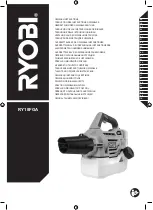
TORAY MBR
Instruction Manual
06-G-MB2-NHPAC-220801
46 of 61
3. Chemical Cleaning of Element
Continuous filtration of the sludge will eventually result in plugging of the membrane element
pores with trapped solids. Clogging of the membrane pores is indicated by a gradual
increase in module TMP.
A chemical cleaning is recommended when any of the
following conditions are observed.
(1) When the trans-membrane pressure rises by 5 kPa (50 mbar) from its initial
operating level (assuming the filtrate water flow rate is the same) or every 6 months
of operation, whichever comes first. For example, if an MBR was operated at 7 kPa
(70 mbar) TMP in its initial period, then 12 kPa (120 mbar) is the TMP trigger for
chemical cleaning.
(2) When a sudden and significant increase of module TMP is observed. Chemical
cleanings are most effective in restoring membrane permeability if the membranes
are not severely fouled.
(3) It is recommended that operations personnel record the time interval required for the
TMP to increase by 5 kPa. Premature TMP increases can be the result of less than
the optimal operating conditions. This operating procedure is effective to prolong the
life of membranes.
(4) If the membrane permeability is not recovered by a single chemical cleaning, multiple
chemical cleaning may be necessary to restore membrane performance.
4. Chemical Agents Available for Chemical Cleaning
Try and select a cleaner that is most appropriate for the suspected foulant when considering
chemical cleaning agents. Selecting an inappropriate cleaner can result in further loss in
membrane performance or possible membrane damage. Table VIII-1 lists suitable cleaning
chemicals and standard cleaning conditions.
Table VIII-1 Cleaning Chemicals and Standard Cleaning Conditions by Contaminant
Contaminant
Chemical
Solution concentration
Amount used
Hold time
Organic matter
Sodium
hypochlorite
2,000-6,000 mg/L
(Effective chlorine concentration)
(10<pH<12)
0.9 L/element
1 to 3 hours
Inorganic matter
(either of the two
chemicals)
Oxalic acid*
0.5-1.0 wt%
0.9 L/element
1 to 3 hours
Citric acid
1-3 wt%
0.9 L/element
1 to 3 hours
* Oxalic acid should not be applied when wastewater contains calcium, since calcium oxalate may form on
the membrane surface which can choke membrane pores.
















































